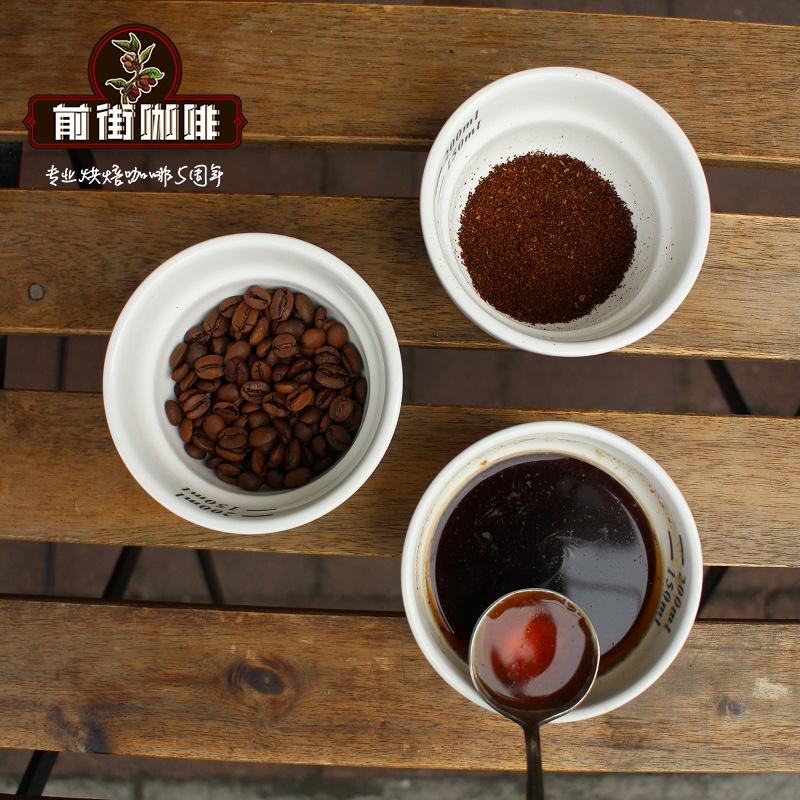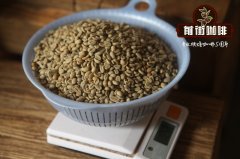SAN IGNACIO Coffee Farm in Bolivia-Coffee planting Story? Bolivian coffee brewing side

Professional coffee knowledge exchange more coffee bean information please follow the coffee workshop (Wechat official account cafe_style)
SAN IGNACIO Coffee Farm in Bolivia-Coffee planting Story? Bolivian coffee brewing method?
This coffee comes from the San Ignacio region of Caranavi, where the best Bolivian coffee is grown. The coffee beans come from the AECAR Cooperative, located in the Entre Rios region of the state of Caranavi, Bolivia. The cooperative was established in 2001 and consists of 82 members with an average farm area of about 10 hectares. Members of the cooperative include the winners of the past Bolivia Cup Excellence Award.
Coffee is organically certified. San Ignacio is a rural area in Ayopaya province, between the city centre of Laz Paz and Cochabamba. Although the Cochabamba department is known as the "granary of Bolivia", Ayopaya is a region with a range of microclimates, including snowy peaks and tropical valleys. The area is rich in mineral resources and biodiversity and continues to be inhabited mainly by indigenous Quechua and Aymara communities. The warm climate in the tropics is very suitable for growing coffee plants because many families support their livelihood. Winding through the valley are two flowing rivers that branch northward from the Beni River: Rio Santa Elena and Rio Cotacajes. Tourists from the area can also stop near the beautiful Parque Nacional Isiboro-Secure.
Victor Mamani runs a coffee farm with his wife Aleja and their four young daughters: Yola,Sonia,Marisol and Magali. But it took them a lot of time, energy and effort to get to where they are today. Victor and Aleja, who were not originally from the region, began their coffee tour at cafetales (Coffee Farm) in San Ignacio. After five difficult years, each of them was able to buy their own cafe and moved permanently to San Ignacio in 2002.
San Ignacio HistoryJuana Mamami Huanca of an Ignacio's San Ignacio Cooperative is a first-generation coffee producer. She started producing coffee on her farm at the age of 16 and is now only 23 years old. She won second place in the Cup of Excellence in Bolivia. Juana took part in the 2005 competition, but failed to win a cup of excellence. In the past two years, she has been committed to improving quality and focusing on competing again. Her farm covers an area of six hectares and is located in Carrasco La Reserva area of Caranavi province, about 1500 meters above sea level.?? I've always planned to take part in [the competition]. She said,? Now I plan to increase my output and quality of life. She is now trying to build another half a hectare of coffee.
Like many other coffee farmers in San Ignacio, they now have 10 hectares (about 22 acres) of cafes, four of which are dedicated to coffee production. It is located 1615 meters (5300 feet) above sea level, and the coffee they grow belongs to the Typica breed. The farm is rich in Inga and Cedar trees, providing an excellent hue for coffee plants. Production is carried out without the use of chemical fertilizers or pesticides, but without organic fertilizers
Variety: Typica (80%,), Caturra (20%,)
Qianjie is recommended to cook:
Filter cup: Hario V60
Water temperature: 88 degrees
Degree of grinding: small Fuji degree of grinding 4
Cooking methods: the ratio of water to powder is 1:15, 15g powder, the first injection of 25g water, 25 s steaming, the second injection to 120g water cut off, waiting for the powder bed water to half and then water injection, slow water injection until 225g water, extraction time about 2:00
Analysis: using three-stage brewing to clarify the flavor of the front, middle and back of the coffee. Because V60 has many ribs and the drainage speed is fast, it can prolong the extraction time when the water is cut off.
Important Notice :
前街咖啡 FrontStreet Coffee has moved to new addredd:
FrontStreet Coffee Address: 315,Donghua East Road,GuangZhou
Tel:020 38364473
- Prev

The story of growing La Llama coffee farm in Bolivia? What are the growing conditions of La Llama coffee?
Professional coffee knowledge exchange more coffee bean information please follow the coffee workshop (Wechat official account cafe_style) Bolivia La Llama coffee farm planting story? What are the growing conditions of La Llama coffee? This very special Java micro batch comes from a new farmer named Finca La Llama, who was planted in 2015.
- Next

Yunnan coffee bean flavor map _ Yunnan coffee bean flavor research report _ how about Yunnan small grain coffee
Professional coffee knowledge exchange more coffee bean information please follow the coffee workshop (Wechat official account cafe_style) Thank Professor Qiao of Shenzhen Vocational and Technical College for recommending an article in "China Journal of Tropical crops", a research report on the flavor of coffee beans in Yunnan. I found it very interesting to read it and share the main idea with you. ● the report is aimed at four places in Yunnan.
Related
- Detailed explanation of Jadeite planting Land in Panamanian Jadeite Manor introduction to the grading system of Jadeite competitive bidding, Red bid, Green bid and Rose Summer
- Story of Coffee planting in Brenka region of Costa Rica Stonehenge Manor anaerobic heavy honey treatment of flavor mouth
- What's on the barrel of Blue Mountain Coffee beans?
- Can American coffee also pull flowers? How to use hot American style to pull out a good-looking pattern?
- Can you make a cold extract with coffee beans? What is the right proportion for cold-extracted coffee formula?
- Indonesian PWN Gold Mandrine Coffee Origin Features Flavor How to Chong? Mandolin coffee is American.
- A brief introduction to the flavor characteristics of Brazilian yellow bourbon coffee beans
- What is the effect of different water quality on the flavor of cold-extracted coffee? What kind of water is best for brewing coffee?
- Why do you think of Rose Summer whenever you mention Panamanian coffee?
- Introduction to the characteristics of authentic blue mountain coffee bean producing areas? What is the CIB Coffee Authority in Jamaica?

